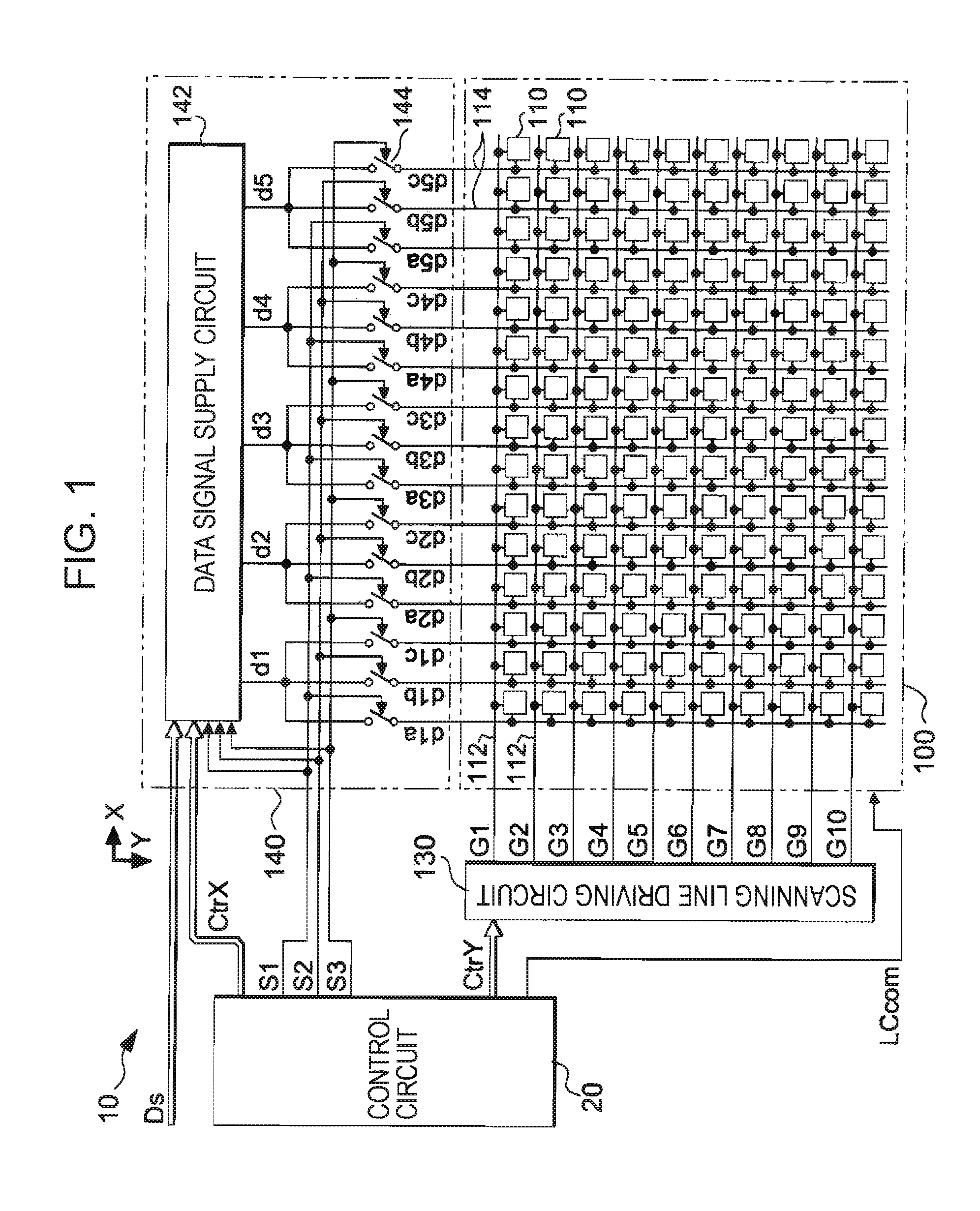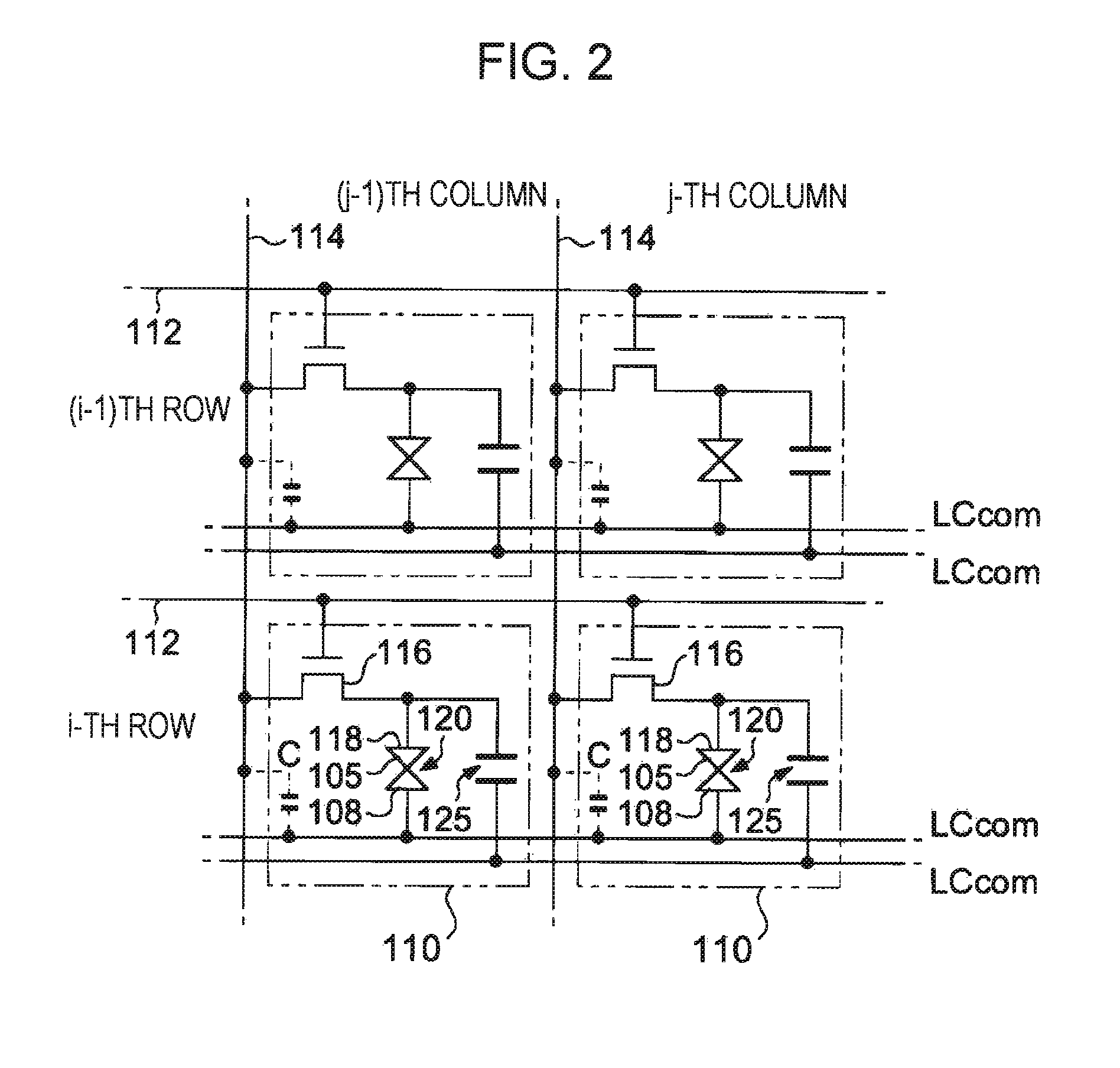Electro-optical device, driving method therefor, and electronic apparatus
a driving method and optical technology, applied in the direction of electric digital data processing, instruments, computing, etc., can solve the problem of wide voltage range, and achieve the effect of reducing the character requirements of switching elements of pixels and a circuit for driving scanning lines
- Summary
- Abstract
- Description
- Claims
- Application Information
AI Technical Summary
Benefits of technology
Problems solved by technology
Method used
Image
Examples
Embodiment Construction
[0024] An embodiment of the invention will be described with reference to the drawings. FIG. 1 is a block diagram showing a structure of an electro-optical device 10 according to an embodiment of the invention.
[0025] As shown in FIG. 1, the electro-optical device 10 includes a control circuit 20, a display area 100, a scanning line driving circuit 130, and a data line driving circuit 140. In the display area 100, 10 scanning lines 112 arranged in rows extend in the row direction (X-direction), and 15 data lines 114 arranged in columns extend in the column direction (Y-direction).
[0026] Pixels 110 are placed at intersections of the LO scanning lines 112 and the 15 data lines 114. In the embodiment, therefore, the pixels 110 are arranged in a matrix of 10 vertical rows and 15 horizontal columns. However, it is to be understood that the invention is not limited to that arrangement.
[0027] The structure of the pixels 110 will be described. FIG. 2 illustrates an electrical structure of...
PUM
 Login to View More
Login to View More Abstract
Description
Claims
Application Information
 Login to View More
Login to View More - R&D
- Intellectual Property
- Life Sciences
- Materials
- Tech Scout
- Unparalleled Data Quality
- Higher Quality Content
- 60% Fewer Hallucinations
Browse by: Latest US Patents, China's latest patents, Technical Efficacy Thesaurus, Application Domain, Technology Topic, Popular Technical Reports.
© 2025 PatSnap. All rights reserved.Legal|Privacy policy|Modern Slavery Act Transparency Statement|Sitemap|About US| Contact US: help@patsnap.com



